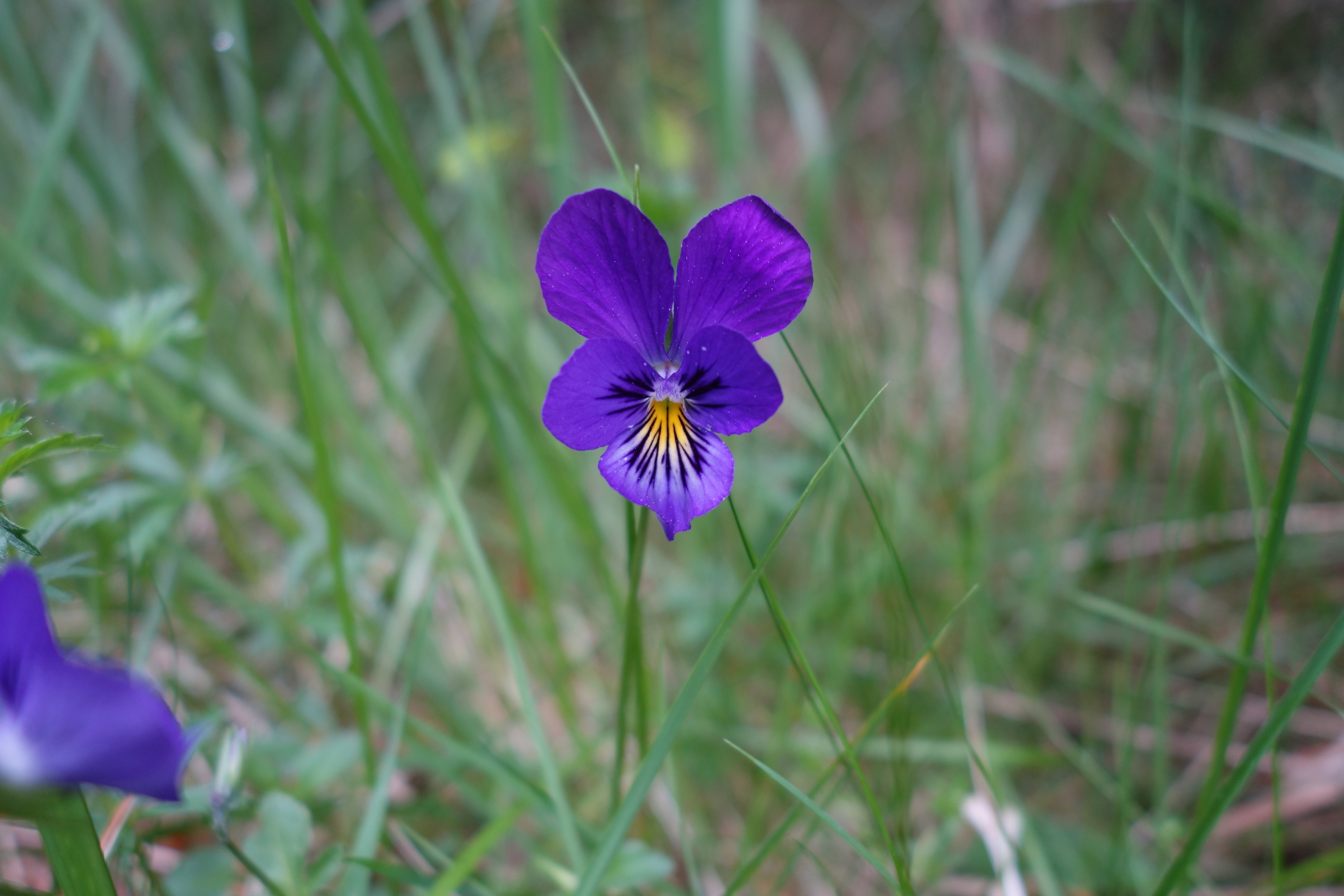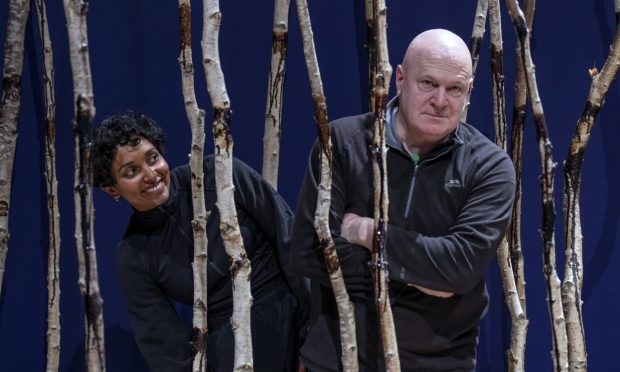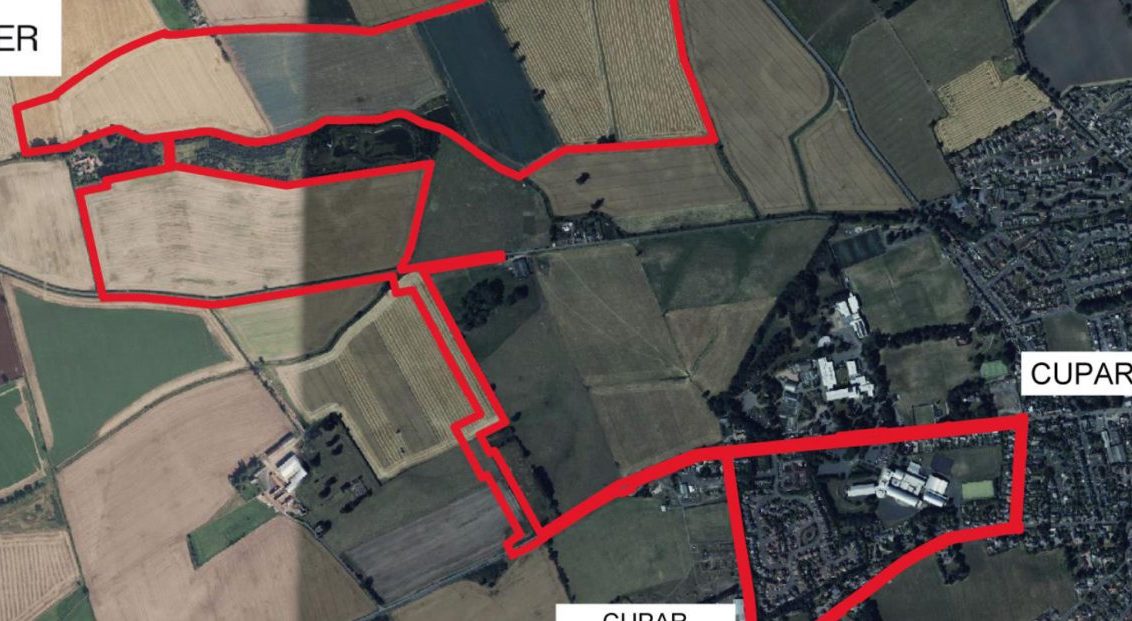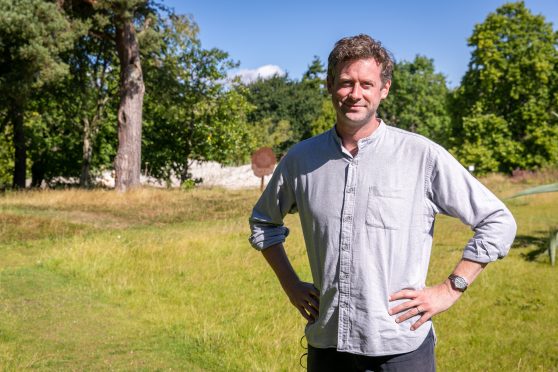The scattering of purple-flowered mountain pansies adorned the edge of this forestry track in the Ochils like a velvet carpet.
The flowers were as deep as any purple can be; the kind of colour that would sit well upon the robe of a monarch. I hunkered down to my knees to enjoy their exquisite elegance in closer detail – and what regal little gems they were. Their petals are so delicate with the bottom-most one having the gentlest dab of yellow-orange, set upon which are subtle dark lines that invitingly lead to the centre of the flower, thus beckoning insects to alight and pollinate.
In amongst this purple heaven were a couple of yellow-flowering mountain pansies, standing out from their compatriots and providing the most wonderful contrast in colour. In the Ochil Hills the overwhelming majority of mountain pansies are purple, but in some parts of the country yellow varieties predominate. Our wild pansies can show great variation and different species often hybridise with each other.
As I absorbed the magic of these mountain pansies, my eyes were drawn to the nearby tussocks of grass, which were pockmarked with field vole holes. These little rodents are more prolific than ever this summer and their signs were all around. Field voles typically undergo regular population cycles of boom and bust, and they are currently right at their peak in this little corner of the country.
Other creatures benefit from such abundance of easily caught prey, most notably buzzards, which are having a bumper breeding season. Indeed, I’ve never seen so many buzzards in one place as have gathered in the glen this year. It is a case of making hay while the sun shines and in places by the track side, the shiny dark droppings of pine martens could also be seen. It would seem that they too are reaping the rewards from this vole bonanza.
This area is always a special place for wildflowers, with bird’s-foot trefoil being especially prolific at the moment, which in turn attracts butterflies and bees. Orange-tip butterflies flutter in the air and in a few weeks time common blues will appear too. But my favourite insect in this locality is the blaeberry bumblebee, a small and rather scarce bee which can be identified by it orange-furred abdomen.
They like to nest in old vole burrows and perhaps the surge in field vole numbers will prove beneficial for them.
But the dry spring has not been good news for every hill creature. After a good start, it has now turned into a terrible breeding season for frogs due to ditches and upland ponds having dried up completely, resulting in the demise of their tadpoles.
Frogs are relatively long-lived animals, so the failure of this year’s offspring is not necessarily a catastrophe, but they will need a few wet springs in the years to come if they are to maintain their numbers.
Info
The field pansy and the wild pansy also occur in Scotland, the latter often being known as ‘heartsease’ in reference to it close association in folklore with all matters concerning love.









